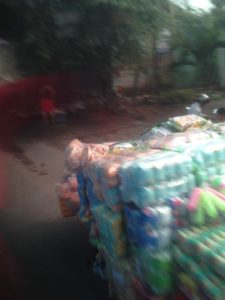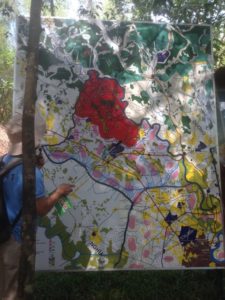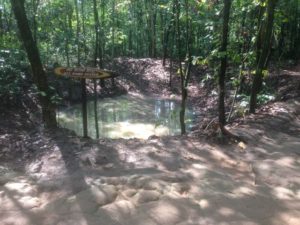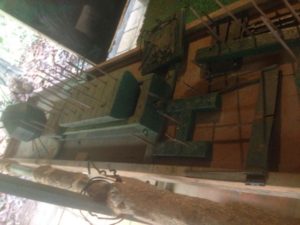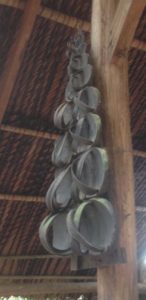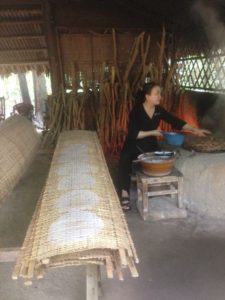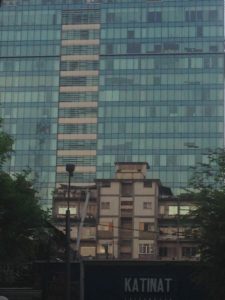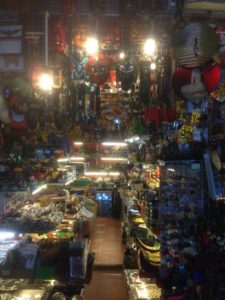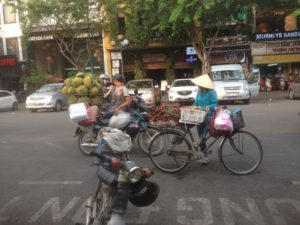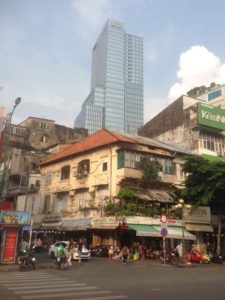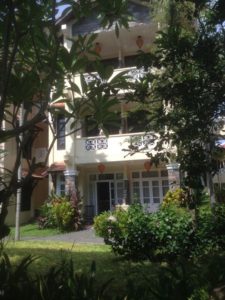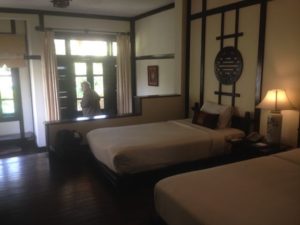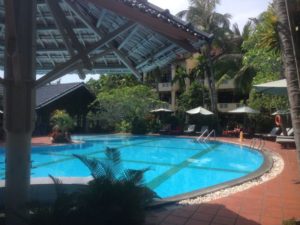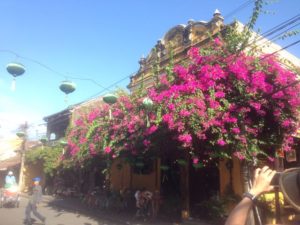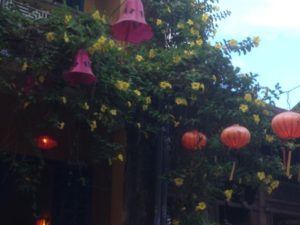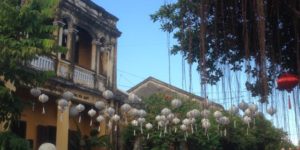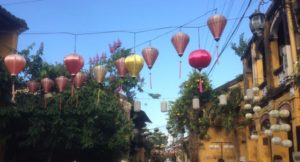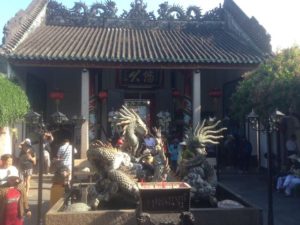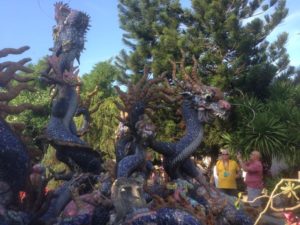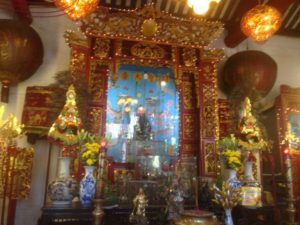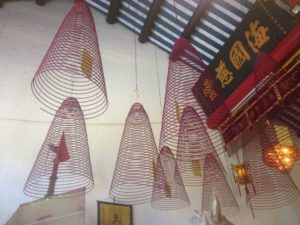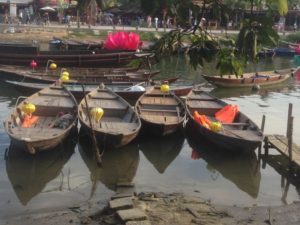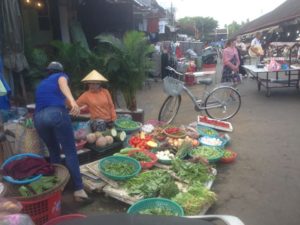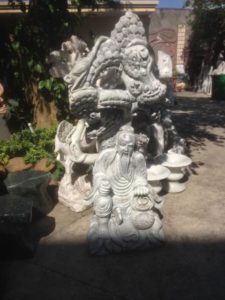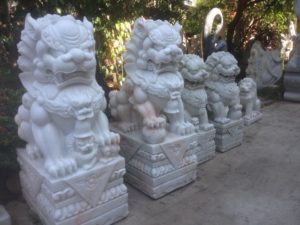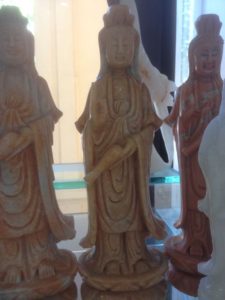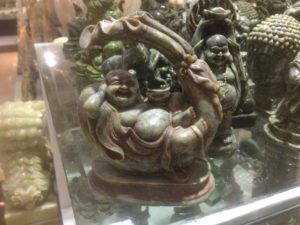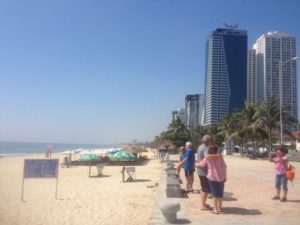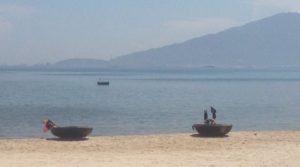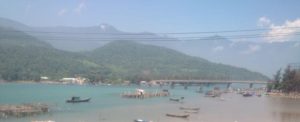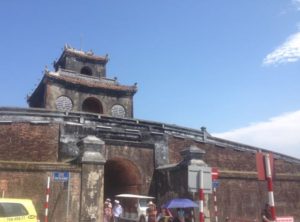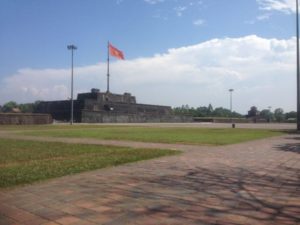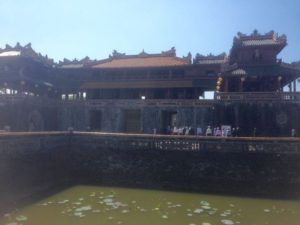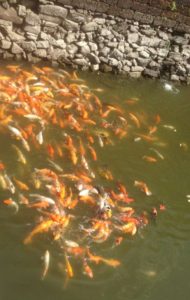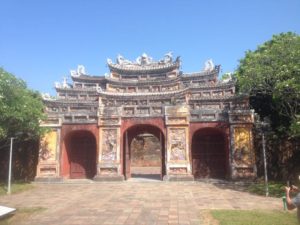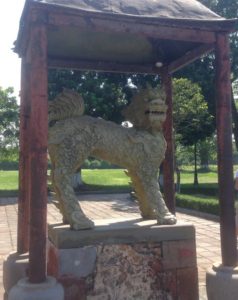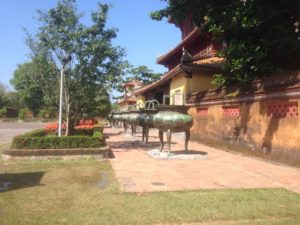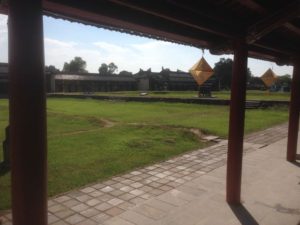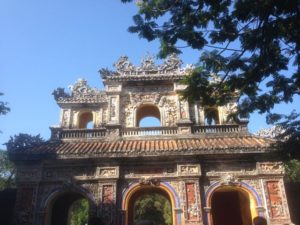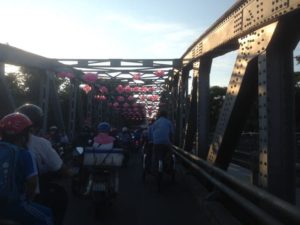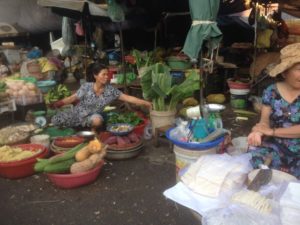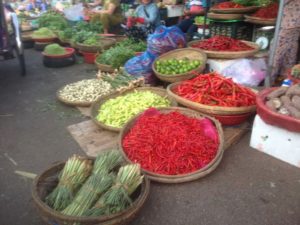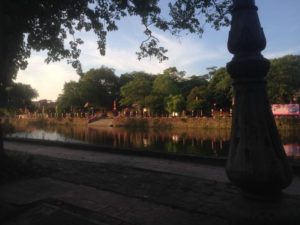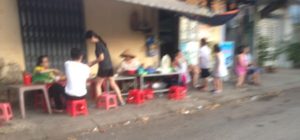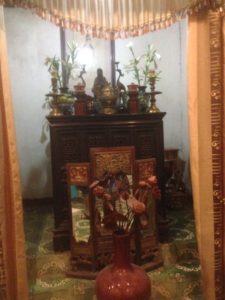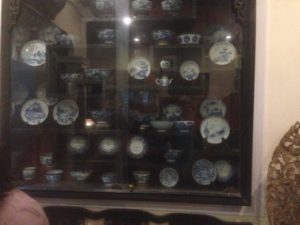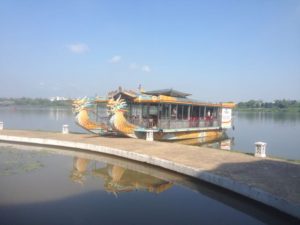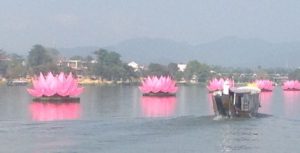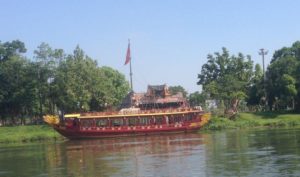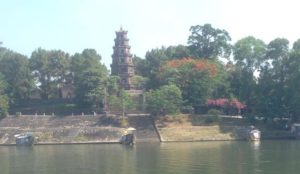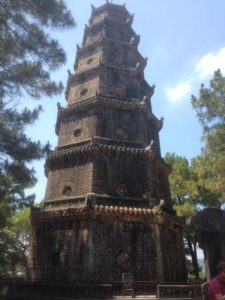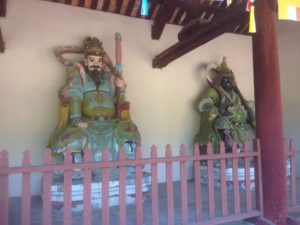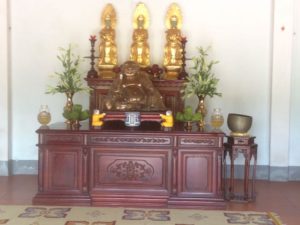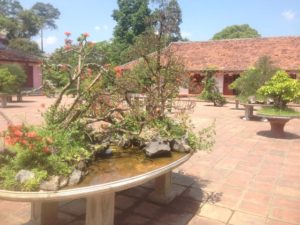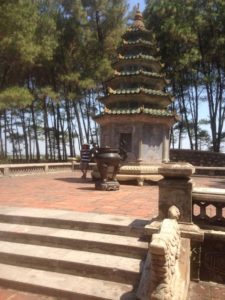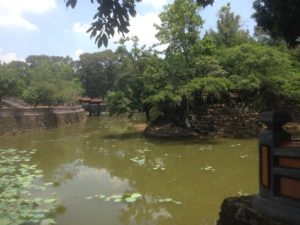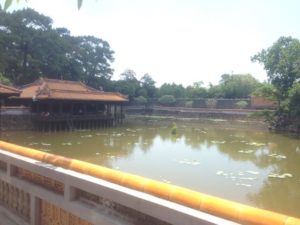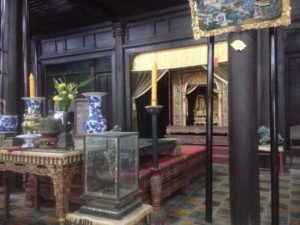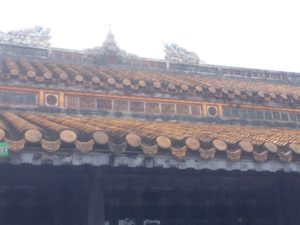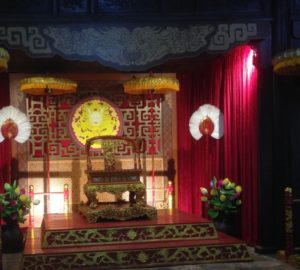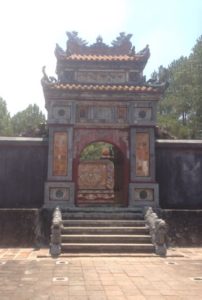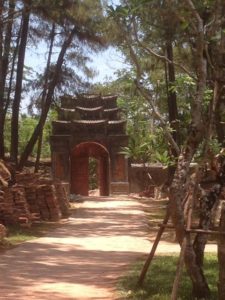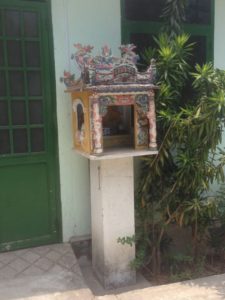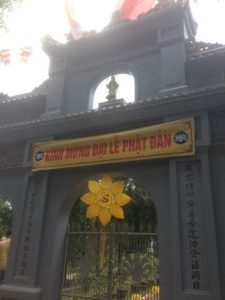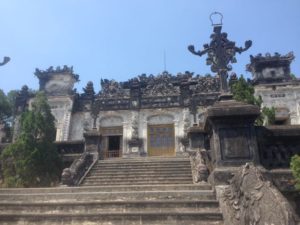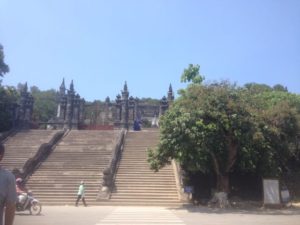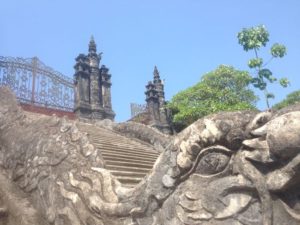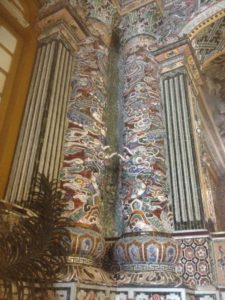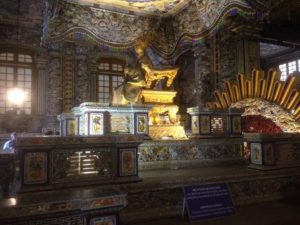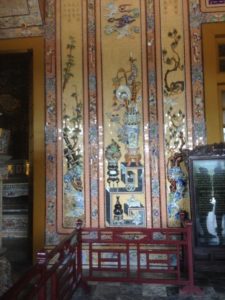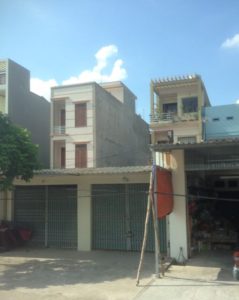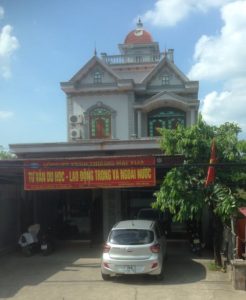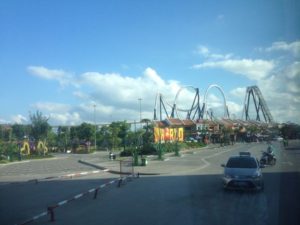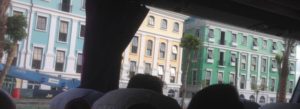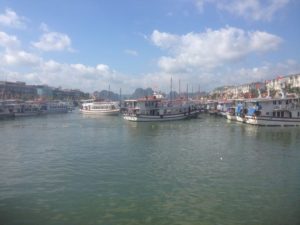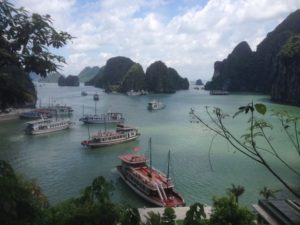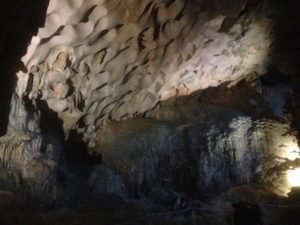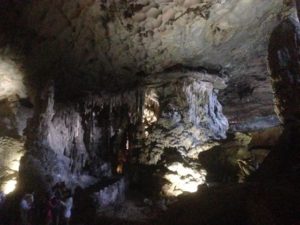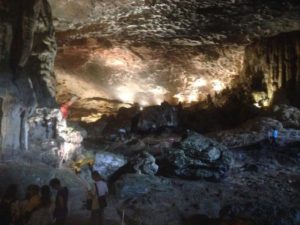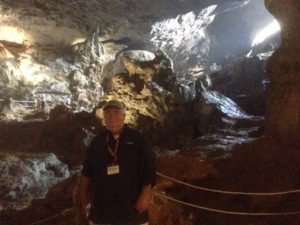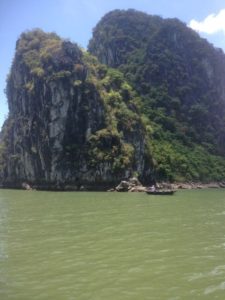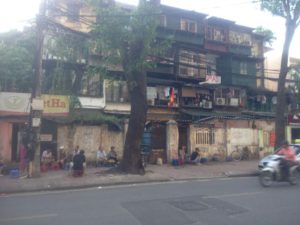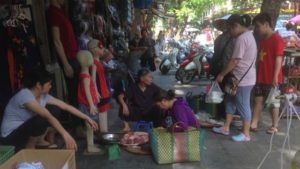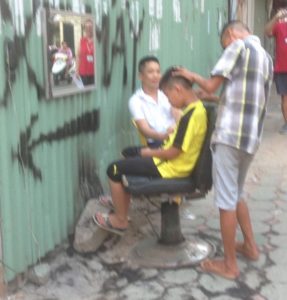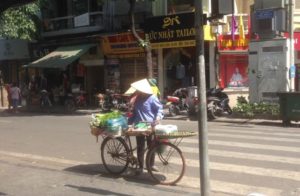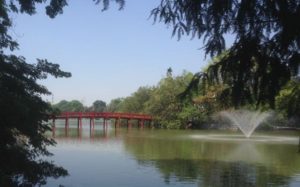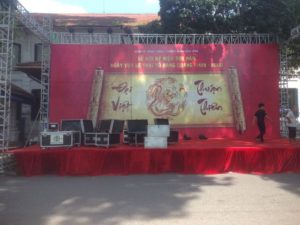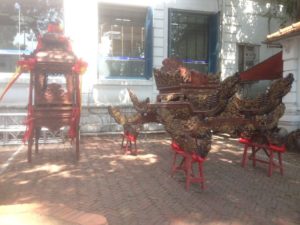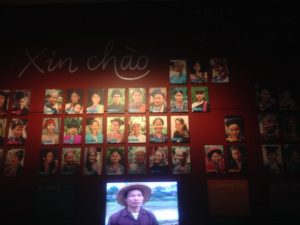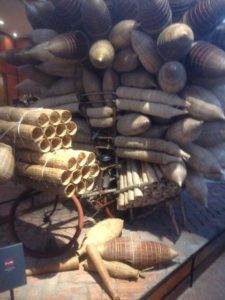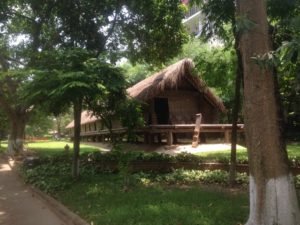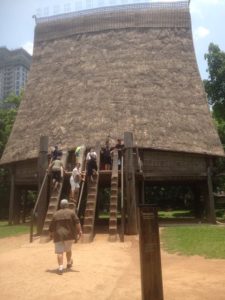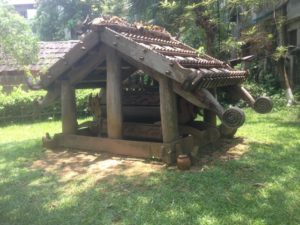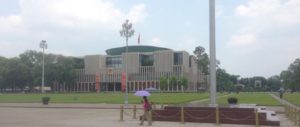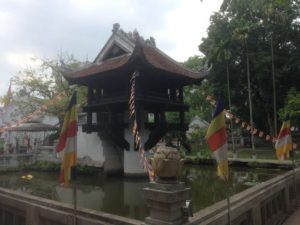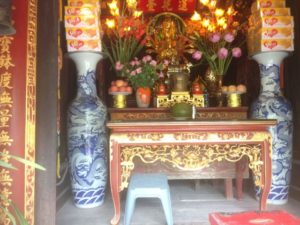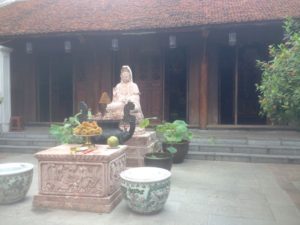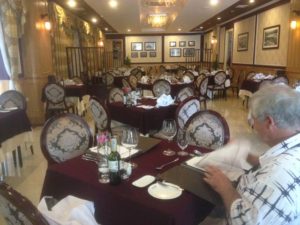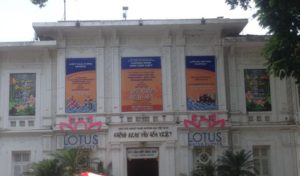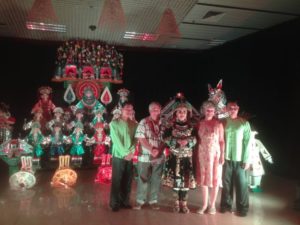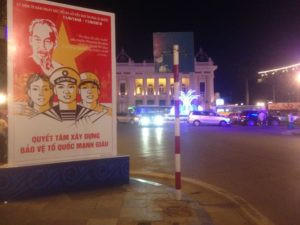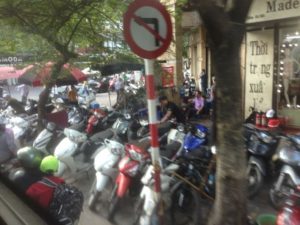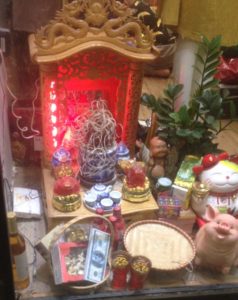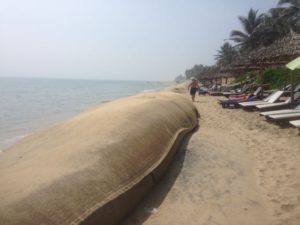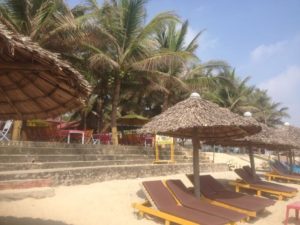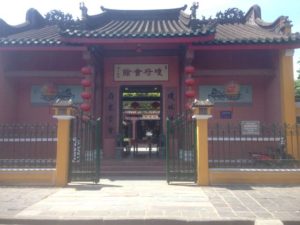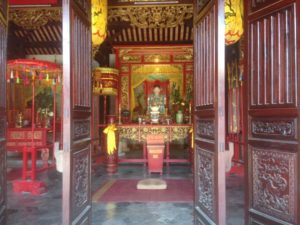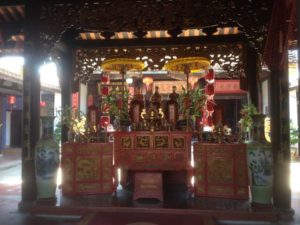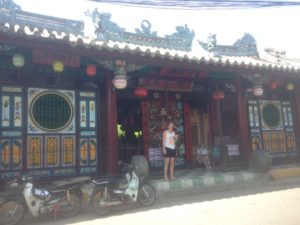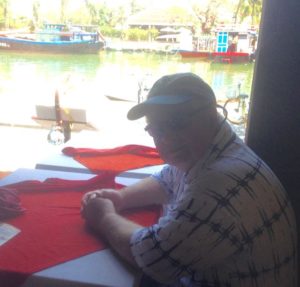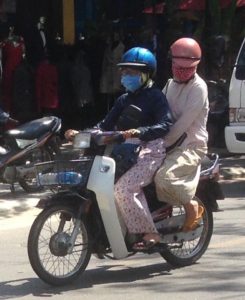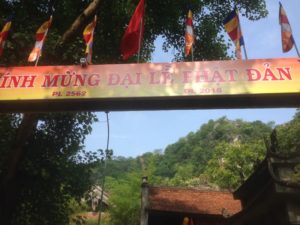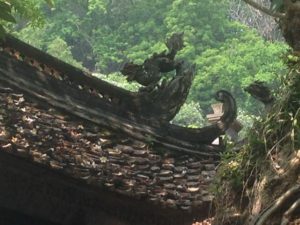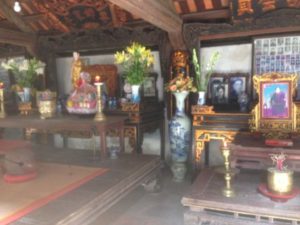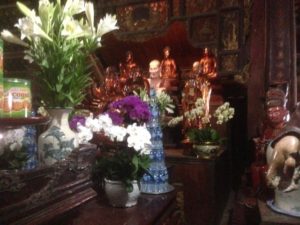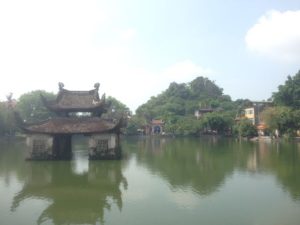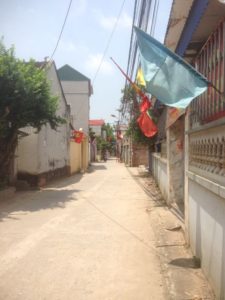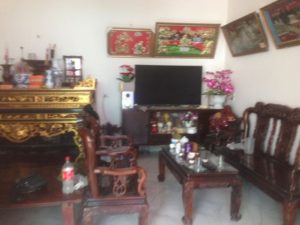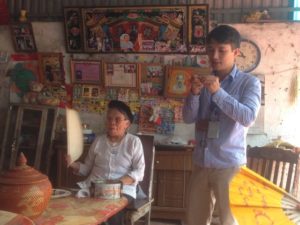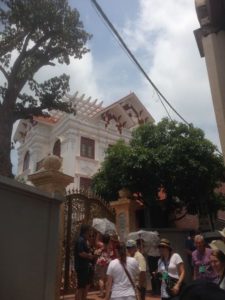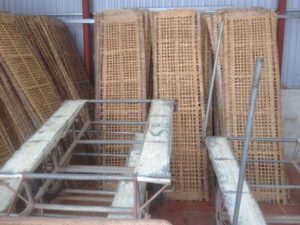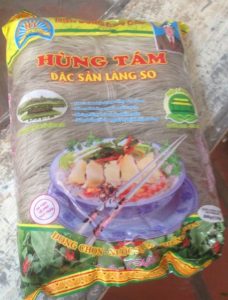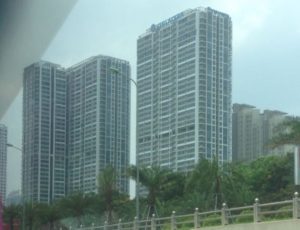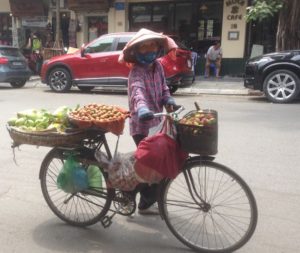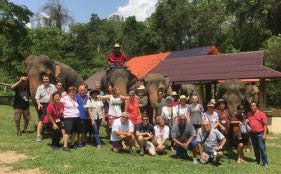After two weeks in Thailand, we flew from Chiang Mai to Ho Chi Minh City (formerly Saigon) for the second leg of our tour.
The first shock was the traffic. Thousands of scooters crowd the streets, many carrying three and four people or a household full of goods. 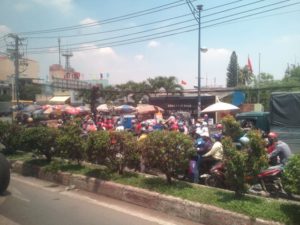
We stayed at the Paragon Saigon, a welcome relief after the chaotic streets.
We ventured out for dinner, but we felt as if we took out lives into our hands if we crossed anywhere but at a light, which were few and far between. Even at lights, the scooters kept going through the red light until a car honked and threatened to hit them. Luckily, we found a recommended French restaurant not far from the hotel and had two delicious past dishes.
The next morning, we did a half day tour of the Cu Chi Tunnels, which were part of the underground tunnel network built by the Viet Cong to control a large rural area near Saigon. Cu Chi was selected as the perfect location because it was only 25 miles outside of Saigon, was at the end of the Ho Chi Minh Trail from the north, had extremely hard clay soil (nicknamed the Iron Triangle), and the villagers in the area had supported the communist since the French war, when the tunnel system was begun. The tunnel network was greatly expanded in the 60’s and 70’s to include 150 miles of tunnels with many branches connecting to underground hideouts, weapon factories, hospitals, shelters, and more tunnels at different levels.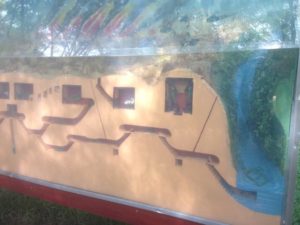
The tunnels had many exits that could be used in case one entrance was discovered. The South Vietnamese Army tried many ways to discover entrances to tunnels and would use soldiers called Tunnel Rats to pursue the enemy underground. There were so many branches, however, and the tunnels zig-zagged so that guns could not be used effectively. The tunnel system allowed the Viet Cong to emerge in darkness to attack enemy forces and to remain hidden during the day.
The entrances to the tunnels were well disguised.
Soldiers could slip into the entrance and pull the hatch back in over their heads.
Our tour guide, Tho, also showed us how the communist soldiers would come up out of the tunnels at night to dig trenches from which to attack the South Vietnamese soldiers. If they won, they gained ground. If they lost, they retreated back into the tunnels, collapsing the tunnel behind them to give themselves time to escape.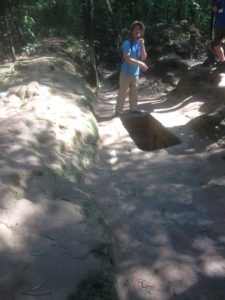
We also saw a crater left by a B-52 bomb that destroyed part of a tunnel.
Unbelievably, as many as 10 thousand people could live in the tunnels.
At first, smoke from cooking fires in the tunnels could be spotted from helicopters and that location could be bombed until the Viet Cong developed a system of funneling smoke through bamboo pipes to many rooms filled with leaves that would filter the smoke and only a small bit of smoke emerged and appeared to be morning fog. The three small holes are kitchen vents.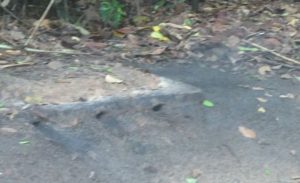
We were also shown many of the booby traps created by the Viet Cong. They were horrific.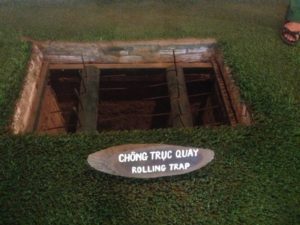
The communists reused any captured hardware to fashion weapons of their own as the recreation of a weapons factory illustrates. 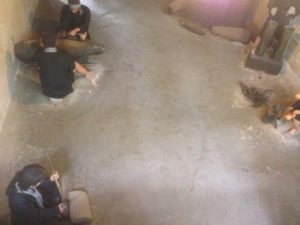
They also fashioned sandals that could last for seven years.out of captured tires.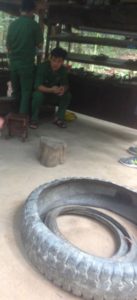
Many techniques were used to keep the tunnels from being discovered. Air vents were cleverly disguised as termite mounds and chili pepper was sprinkled around the holes to discourage dogs from finding them. Sometimes shredded South Vietnamese uniforms were used to fool the dogs into thinking they smelled friendly forces.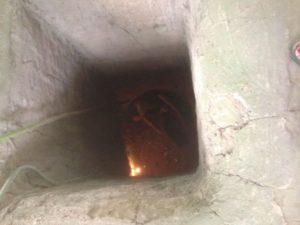
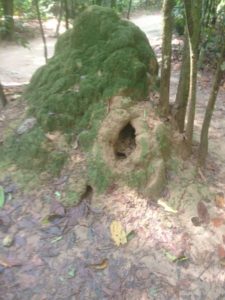
Tunnels were dug with garden tools and the dirt was carried into the rice paddies to disguise it.
One of the eerie things about walking through the jungle was that there is a shooting range where visitors can buy bullets and fire the kinds of weapons they used at the time, including machine guns, so we could hear sporadic gunfire in the background for most of our visit. Just past the shooting range, we saw a demonstration of how the villagers could mill their own rice and how they made rice spring roll wrappers by spreading rice water on a screen and drying the wrappers on bamboo mats.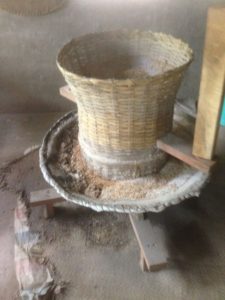
When we finally had a chance to go down one of the tunnels, it was quite a daunting experience. We carried flashlights, but had to crouch in the mostly dark, narrow tunnels. Most of us did only thirty feet of the tunnel and emerged, glad we had not attempted more (the other option was 90 feet and one area where you had to crawl on hands and knees.
After our tour, we sampled cassava or manioc and tea.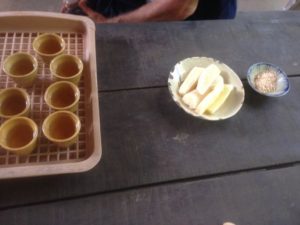
We also learned that after the communists won the war in 1975, 1 million people who served in the South Vietnamese army were sent to re-education camps, where they had to work from 10-12 hour days and afterwards listen to or read propaganda. Each month they were tested and if they did not pass, they could be beaten. Although the government kept quiet about all of this, 165,000 people died between 1975 and 1987 when they were released. After their release, they could not find jobs and many tried to escape Vietnam on fishing boats or walked through the jungle to Thailand, Laos, or Cambodia. Three million refugees left Vietnam.
In the afternoon we did a tour of the city. We passed the oldest hotel in Saigon, the Hotel Continental, where Graham Greene wrote the Quiet American. Just across the street is Notre Dame Cathedral built between 1877 and 1883 by the French. 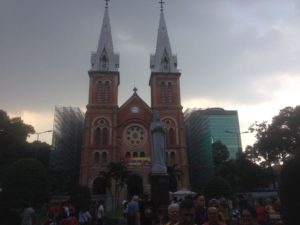 It can hold 1,200 people. About 1/3 of Saigon’s 8 million residents (unofficially more like 12 million) are Catholic. About 10% of the country as a whole are Catholic. 80% of the country are Buddhist. The cathedral, currently closed for renovation, is 60 meters high with a-red brick façade (imported from Marseille), stained glass windows, and two bell towers containing six bronze bells that still ring to this day.
It can hold 1,200 people. About 1/3 of Saigon’s 8 million residents (unofficially more like 12 million) are Catholic. About 10% of the country as a whole are Catholic. 80% of the country are Buddhist. The cathedral, currently closed for renovation, is 60 meters high with a-red brick façade (imported from Marseille), stained glass windows, and two bell towers containing six bronze bells that still ring to this day.
Across the street is the Central Post Office built in 1886 by the same firm that built the Eiffel Tower.  Inside, the structure looks just as it did when it was built.
Inside, the structure looks just as it did when it was built.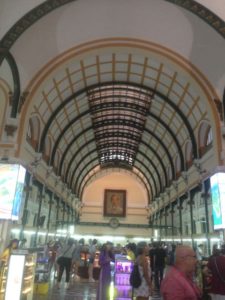
Beside the post office, we could see the old CIA building, where helicopters airlifted people out as the Viet Cong were taking the city.
Then we went to a lacquer factory where we saw three different kinds of lacquerware produced, mother of pearl inlay, eggshell inlay, and painted lacquerware.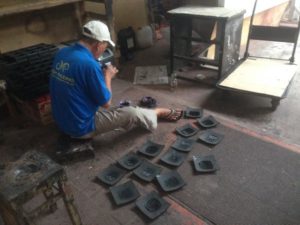
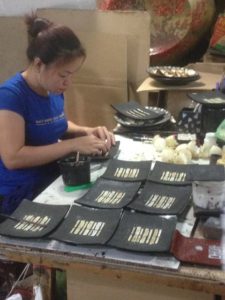
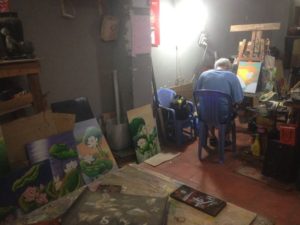 The lacquer comes from a lacquer tree and as many as 18-20 layers must be applied.
The lacquer comes from a lacquer tree and as many as 18-20 layers must be applied.
Ben Thanh Market, begun in 1919 on the muddy fields near the river, is the largest market in Saigon. It closes at 6 pm but opens again on the streets outside the building at 7 pm.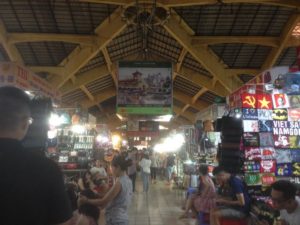
The market was crowded and very hot inside, all a bit overwhelming.
That night there was a huge rain storm accompanied by lots of lighting, so we were glad to eat in the hotel restaurant.




